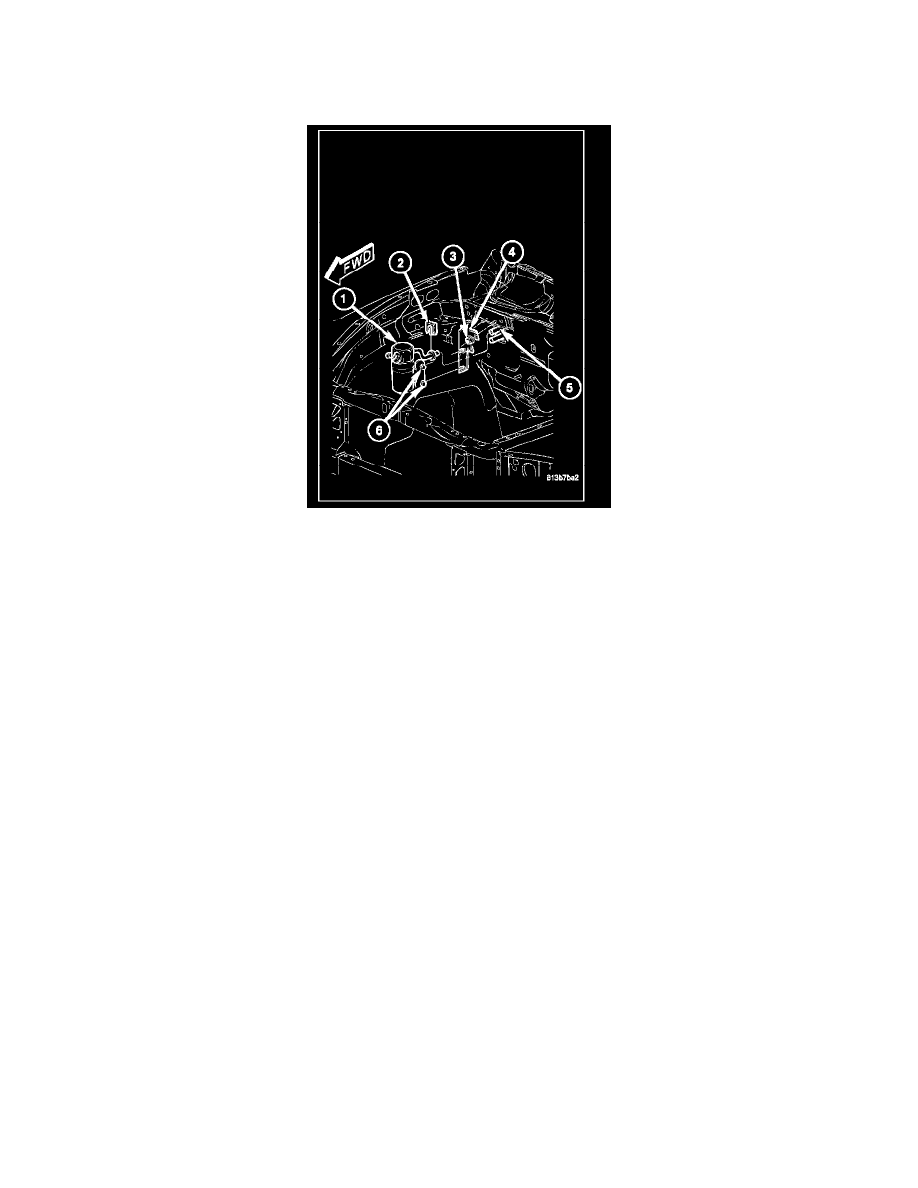Raider 4WD V6-3.7L SOHC (2007)

Accumulator HVAC: Service and Repair
REMOVAL
WARNING: Review the warnings and cautions in the front of this section before performing the following operation .
2. Recover the refrigerant from the refrigerant system.
3. Remove the air filter housing to gain access to the A/C accumulator.
4. Disconnect the A/C suction line from the A/C accumulator and remove and discard the O-ring and gasket.
5. Remove the secondary retaining clip (2) from the spring-lock coupler that secures the accumulator inlet tube to the evaporator outlet tube (5).
6. Loosen the bolts (6) that secure the A/C accumulator to the mounting bracket (4).
7. Using the proper A/C line disconnect tool (Special Tool Kit 7193 or equivalent), disconnect the accumulator inlet tube from the evaporator outlet
tube and remove and discard the O-ring seals.
8. Install plugs in, or tape over the opened refrigerant system connections.
9. If required, remove the nuts (3) that secure the accumulator mounting bracket to the dash panel and remove the bracket from the engine
compartment.
INSTALLATION
CAUTION:
-
Be certain to adjust the refrigerant oil level when servicing the A/C refrigerant system. Failure to properly adjust the refrigerant oil level
will prevent the A/C system from operating as designed and can cause serious A/C compressor damage.
-
The A/C accumulator must be replaced if an internal failure of the A/C compressor has occurred. Failure to replace the A/C accumulator
can cause serious A/C compressor damage.
NOTE:
-
When replacing multiple A/C system components, refer to the Refrigerant Oil Capacities chart to determine how much oil should be added to the
refrigerant system.
-
If only the A/C accumulator is being replaced, add 60 milliliters (2 fluid ounces) of refrigerant oil to the refrigerant system. Use only refrigerant
oil of the type recommended for the A/C compressor in the vehicle.
-
Replacement of the refrigerant line O-ring seals and gaskets is required anytime a refrigerant line is opened. Failure to replace the rubber O-ring
seals and metal gaskets could result in a refrigerant system leak.
